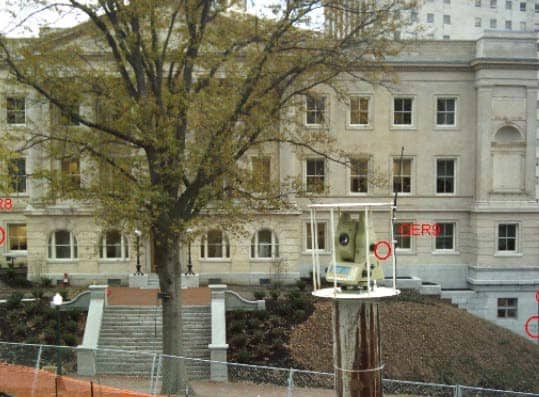Virginia State Capitol | USA
Project summary
Images of the project
Richmond Capitol
The Virginia State Capitol Building is the seat of state government of the Commonwealth of Virginia. It was designated a National Historic Landmark in 1960 and is located in Richmond, VA.
Originally built in the vision of Thomas Jefferson in the late 17th century, it was identified as a historical building that required monitoring when a deep excavation immediately adjacent to the structure was proposed in 2013.
Real-Time Monitoring at the Virginia State Capitol
Sixense, Inc. was awarded this project due to their expertise in precise measurement capabilities and world-renowned knowledge of monitoring historical structures.
A real-time instrumentation system was installed, consisting of three Sixense Cyclops systems (Automatic Total Stations) with about 80 optical prisms, two in-place and one manual inclinometer, and temperature sensors. All the data was processed through software with a state-of-the-art internet alert management system that was valuable to the involved stakeholders. The system proved to be an effective means of monitoring movements as well as helpful to control the various phases of the construction.
Project Challenges
The challenges of this project included an exteremly restrictive movement tolerance for the historic building, with deteriorating foundations and a deep excavation in very close proximity to the building. Any of these factors would be sufficient to upset the 6.4 mm (0.25 inch) movement goal that was established by the design, let alone when combined with other factors that could exacerbate the situation.
The geotechnical instrumentation deployed for the project played a critical role in overcoming these challenges. The precision allowed the following:
- Trusted data
- Real-time capability permitting better management of construction activities
- Remote accessibility made for ease of access to data by all stakeholders
With the excavation for the new Visitor Center complete and construction underway, the Virginia State Capitol building movements were well within the goal of 6.4 mm (0.25 inch). The maximum recorded movement remained at 4.3 mm (0.17 inch), as observed during the jet grouting period.
